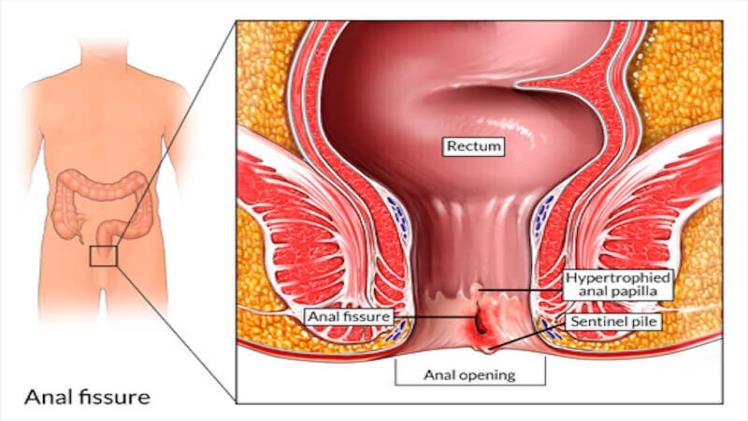Hemorrhoids and fissures are common anorectal conditions that can cause discomfort and pain. In this comprehensive pictorial guide.
We will explore both conditions, accompanied by pictures to aid in understanding and identification.
Whether you’re seeking clarity on your own symptoms or looking to learn more about these conditions, “pictures of hemorrhoids and fissures,” will provide valuable insights.
Understanding Hemorrhoids
Hemorrhoids, also known as piles, are swollen blood vessels located in the rectal or anal area. They can be internal, external, or a combination of both. Understanding their nature is essential for proper identification.
Understanding Anal Fissures
Anal fissures are small tears or cracks in the lining of the anus. They can cause pain, bleeding, and discomfort, especially during bowel movements. Understanding the characteristics of fissures is crucial for proper recognition.
Hemorrhoids vs. Fissures – Key Differences
Comparative Analysis
In this section, we will compare and contrast hemorrhoids and fissures in terms of their causes, symptoms, and treatment options. Understanding these differences will help you pinpoint your condition accurately.
Seeking Relief and Treatment
Managing Hemorrhoids and Fissures
This section will discuss various treatment options and lifestyle changes that can help alleviate the symptoms of hemorrhoids and fissures. It’s essential to seek medical advice for a proper diagnosis and personalized treatment plan.
Conclusion
Hemorrhoids and fissures can be uncomfortable and often require prompt attention. By using this pictorial guide with pictures of hemorrhoids and fissures, you gain a visual understanding of these conditions, which can aid in self-assessment and discussions with healthcare professionals.
Remember that while self-identification is valuable, consulting a medical expert for a definitive diagnosis and tailored treatment plan is essential for managing and alleviating the discomfort associated with these anorectal conditions.
Frequently Asked Questions (FAQs)
1. What are hemorrhoids, and how do they develop?
Hemorrhoids are swollen blood vessels in the rectal or anal area. They can develop due to increased pressure in the lower rectum, often caused by straining during bowel movements, chronic constipation, or pregnancy.
2. What causes anal fissures?
Anal fissures are typically caused by the stretching and tearing of the anal lining during bowel movements. Hard or large stools, frequent diarrhea, and certain medical conditions can contribute to the development of fissures.
3. Can I identify hemorrhoids and fissures on my own using pictures?
Pictures of hemorrhoids and fissures can provide visual references, but a healthcare professional’s diagnosis is essential for accuracy. If you suspect you have either condition, it’s important to seek medical advice for a thorough evaluation.
4. What are the common symptoms of hemorrhoids and fissures?
Common symptoms of hemorrhoids include pain, itching, bleeding during bowel movements, and a lump near the anus. Anal fissure symptoms include pain during and after bowel movements, bright red blood in the stool or on toilet paper, and anal discomfort.
5. How are hemorrhoids and fissures treated?
Treatment for hemorrhoids and fissures varies depending on the severity of the condition. It may include dietary changes, increased fiber intake, over-the-counter creams or ointments, sitz baths, or in some cases, surgical procedures. Consult with a healthcare provider for personalized treatment recommendations.
6. Can hemorrhoids or fissures be prevented?
Yes, you can take steps to prevent these conditions. Maintaining a high-fiber diet, staying well-hydrated, avoiding straining during bowel movements, and practicing good anal hygiene can help reduce the risk. For hemorrhoids, avoiding prolonged sitting and heavy lifting is also beneficial.
7. Are hemorrhoids and fissures contagious?
No, hemorrhoids and fissures are not contagious. They are not caused by bacteria or viruses and cannot be transmitted to others through direct contact.
8. When should I see a doctor for hemorrhoids or fissures?
You should consult a healthcare professional if you experience persistent or severe symptoms, such as excessive bleeding, severe pain, or if your symptoms do not improve with at-home treatments. Additionally, if you are unsure whether you have hemorrhoids or fissures, seeking a medical diagnosis is recommended.
9. Are there any complications associated with untreated hemorrhoids or fissures?
Untreated hemorrhoids or fissures can lead to complications such as thrombosed hemorrhoids (clotted blood vessels), infection, or the development of chronic conditions. It’s crucial to seek timely treatment to prevent these complications.
10. Can I use natural remedies for hemorrhoids and fissures?
Some natural remedies, like sitz baths with warm water and the use of witch hazel pads, may provide relief from symptoms. However, it’s essential to consult with a healthcare professional for a proper diagnosis and treatment plan, as severe cases may require medical intervention.


